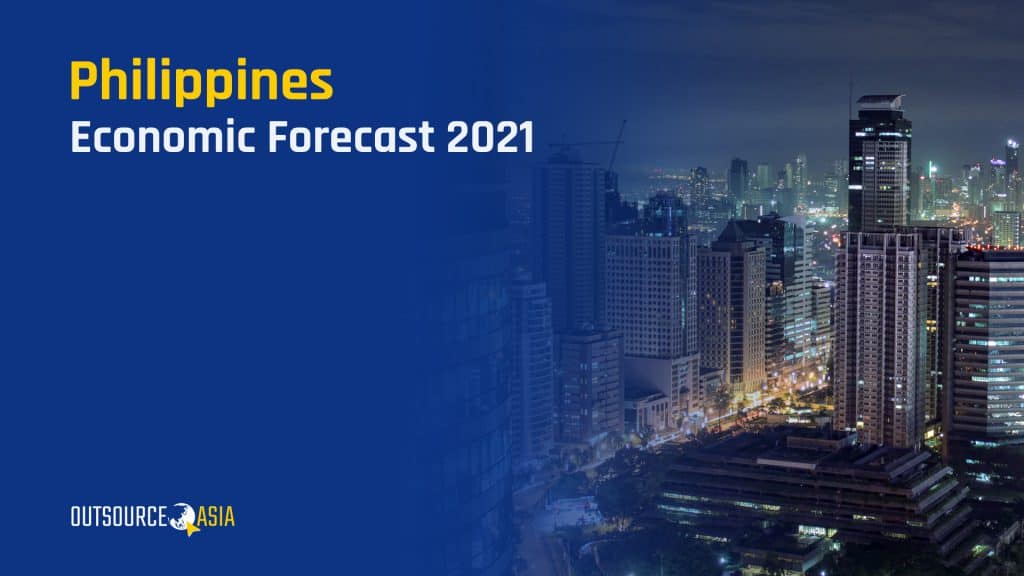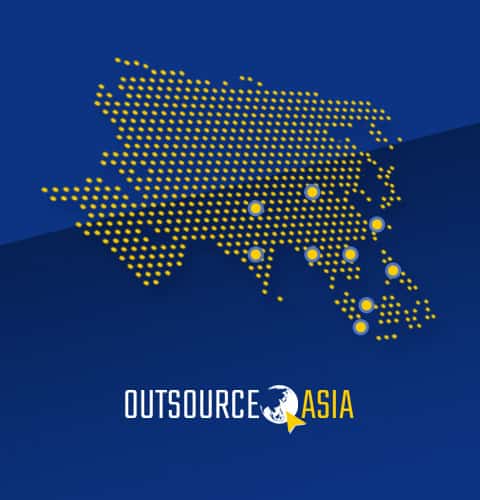
Philippines Economic Forecast 2021
The Philippines Economic Forecast 2021 summarizes key economic and social developments over the past year. It also presents findings on the evolution of policy reforms, external/global conditions, and financial-market dynamics from world-recognized financial institutions and multinational professional services authorities, assessing their implications for the country’s medium-term economic outlook.
The Philippines economy, according to Asian Development Bank (ADB), will have a growth projection of 4.5% in 2021 and 5.5% in 2022. Its flagship economic publication, Asian Development Outlook (ADO) 2021, reports that substantial progress in the country’s vaccination rollout can boost consumer and business confidence. “If there are programs to support private sector workers and reforms to boost investment and productivity growth, the 4.5% estimated growth forecast can potentially increase,” ADB Philippines Country Director Kelly Bird said.
Even the upcoming World Bank’s Ease of Doing Business (EODB) 2021 survey predicts a stronger recovery this year which can be attributed to efforts on streamlining government procedures for business registration. The Philippines rose to the 95th spot with a 62.8 score in 2020 from 124th rank with a 57.68 score in 2019. “We are heeding the President’s directive to implement Republic Act 11032, also known as the Ease of Doing Business and Efficient Government Service, and this can lead to a much-improved score on the EODB Survey 2021,” said Director General Jeremiah Belgica of Anti-Red Tape Authority (ARTA).
In a post-COVID era, the Philippines is still considered the seventh most attractive nation for investors and businesspeople. According to CEO Magazine, the Philippines scored high in terms of constitutional framework (94.9), education and research (94.8), market potential (92.8) and trade openness (91.3). The ambitious “Build, Build, Build” infrastructure program, strong anti-corruption drive, and hardworking workforce all play a major role for the country’s investor ranking. The government has also achieved remarkable progress in areas of physical, social, and financial resilience. Proactive policy reforms include the development of early warning systems (EWS) to enhance risk identification, creation of the National Community Driven Development Program to support vulnerable households and disaster-affected communities, as well as carrying out of the Disaster Risk Financing and Insurance Strategy, respectively.
Though other industries deemed non-essential such as aviation, entertainment, food service, hospitality, leisure, and tourism, have been vastly affected, re-opening the country to foreign tourists may result to new jobs and hiring. As of Q1 2021, the unemployment rate fell to 7.1% which is the lowest since the height of the pandemic. On the other hand, labor force participation rate improved to 60% from 58% in Q4 2020. Having a young, tech-savvy population is the Philippine economy’s “ace in our sleeves”, according to Bangko Sentral ng Pilipinas (BSP) Governor Benjamin Diokno.
It is, however, undeniable that there is a 10% economic contraction in the first three quarters of 2020, as per World Bank report. Strict containment measures, travel restrictions, and a global recession of unprecedented scale due to the coronavirus pandemic are all crucial factors to the slow recovery pace of economic activities. Consumer expenditure decreased from Php 3.66 million in Q4 2020 to Php 3.15 million in Q1 2021. There is also 18.7% decline in services and merchandise exports and 73% decline in inbound tourism revenue. To mitigate the negative economic impact of the global health crisis, the government prioritized the implementation of the Bayanihan to Heal as One Act. Though this did not stop a sharp 6.9% fiscal deficit, it led to 15.1% increase in public spending. Despite an all-time high public debt ratio in almost a decade, there is still manageable fiscal sustainability in the long term. There is also a predicted 4.1% increase in the inflation rate, due rising global commodity prices, but this may ease to 3.5% in 2022 if supply-side pressures are removed.
In Q1 2021, gross domestic product slumped to -4.2% due to decline in the construction sector and real estate. Growth contributors, however, were led by financial and insurance activities, public administration and defense, and human health activities. Data released by the Bangko Sentral ng Pilipinas (BSP) showed that the country’s current $13 billion account surplus, which is equivalent to 3.6% of the GDP, is an impressive turnaround from a $3.047-billion deficit in 2019. The narrowing of the deficit in trade in goods accounts contributed to the record-high surplus experienced in almost two decades. Though net receipts of primary and secondary income declined, trade in services recorded higher net receipts. Data from the Philippine Statistics Authority, on the other hand, showed goods imports dropped 23.3% to $85.6 billion and goods exports shrank 10.1% to $63.8 billion last year. Nevertheless, BSP predicts an 8% and 5% growth for imports and exports in 2021, respectively.
Building a Resilient Economic Recovery
Key stakeholders and programs will play major roles in the Philippine Government’s economic recovery program.
Advancing Multilateral Partnerships for Economic Development (AMPED). Collaborative efforts among key multilateral financial institutions (MFIs) to positively influence and support development policies and inclusive economic growth.
Bayanihan I Act. This provides fiscal support in the form of cash aids, social protection measures, COVID-19 related medical responses, local government assistance, and MSMEs financial assistance.
Bayanihan II Act. Taken from the 2020 GDP, this focuses on helping hard-hit sectors such as agriculture, tourism, and transportation.
BUILD, BUILD, BUILD Program. A top priority of the national government which will ensure swift transit of goods, services, and important government projects.
Corporate Recovery and Tax Incentives for Enterprises (CREATE) Act. This aims to reduce the corporate income tax rates and grant incentives to exporters and critical sectors to help boost long-term economic recovery. It is expected to generate up to 8.4 million jobs and Php 12 trillion in combined domestic and foreign investments over the next decade.
Direct Aid Program (DAP). Implementation of income generation and sustainable livelihoods activities for vulnerable groups and communities badly affected by COVID-19.
Investing in Women Initiative. This is established to promote women’s economic empowerment in the Philippines. Public agencies and private entities work together to improve women’s participation in the workforce, enhance women’s voice in decision making and leadership, and achieve business and workplace gender equality.
Livelihood Seeding Program. This will provide financial, technical, and business management assistance to micro, small and medium enterprises (MSMEs) in the barangay level after the lockdowns are lifted. There is a Php 1.5 billion Economic Recovery Financing facility (COVID-19 ERF) specifically focused on helping businesses through their recovery phase.
Public Private Partnership (PPP) Program. Leveraging private sector finance to deliver quality infrastructure and facilitate the faster movement of people, goods, and services within the Philippines.
Regional Comprehensive Economic Partnership (RCEP) Agreement. The free trade agreement between the Asia-Pacific nations in which the goal is take advantage of mutually beneficial partnership that will lead to global economic growth and development.
The Bangko Sentral ng Pilipinas (BSP) also implemented specific monetary and macro-financial policies to support the government’s programs to counter the impacts of COVID 19 which includes the following:
- Policy rate reduction by a cumulative 200 basis points (bps) to 2% and a lower reserve requirement ratio for commercial banks by 200 bps to 12%.
- Purchases of government securities in the secondary market to ensure the availability of sufficient short-term liquidity in the financial system.
- Temporary relaxation of requirements on single borrower limits, penalties on required reserves, and compliance reporting as part of regulatory relief measures for the banking sector.
- MSME loans to be considered as part of banks’ compliance with reserve requirements which will temporarily reduce credit risk weights to 50%.
- Increased limit of 25% on real estate loan share of financial institutions from 20% of their total loan portfolio (net of interbank loans).
Digitization and the Remote Workforce for Economic Recovery
The Philippines, according to the Technology and Innovation Report 2021 of the United Nations Conference on Trade and Development (UNCTAD), is second over performer in the utilization and adoption of frontier technologies. It has a high ‘country readiness index’ in areas of ICT deployment and research and development (R&D). Despite the country’s lower per capita income, it has exhibited stronger capabilities to adapt artificial intelligence (AI), big data, blockchain, Internet of Things (IoT), nanotechnology, robotics, and solar photovoltaics (PV). In line with this, the Department of Information and Communications Technology (DICT) proposes a $900 million digital transformation budget for fiscal year (FY) 2021 to better adapt to the changes brought by the ‘new normal’ and to support a faster economic recovery.
Supply chain disruptions last 2020 has encouraged retailers and service providers to rely more on AI-backed front-end and back-end solutions. This will likely continue for the next normal as these are key drivers to improved customer experiences and more efficient operations. The Philippines is also embarking on an ambitious AI (artificial intelligence) venture to position the country as a ‘big data processing hub’ that provides high-value data analytics and world-class AI services to local and global clients. “Our rich local talent pool can make this possible”, said Trade Secretary Ramon Lopez. “The BPO (business process outsourcing) industry has always been a key jobs creator for the past two decades and with this AI roadmap, we can see at least $90 billion added to the country’s economic output which is 12% of GDP,” he further explained.
Digital payment systems, e-commerce, online education, and telemedicine have already helped individuals, businesses, and the government ensure business continuity, deliver public services, and cope with social distancing measures, during the imposed lockdown periods. The National Economic and Development Authority (NEDA) reported that integrating these digital technologies can significantly accelerate the country’s economic recovery in a post-COVID era. The Philippine Institute for Development Studies (PIDS) said that once the pandemic starts to recede, a global economic boom will fuel the digital economy and that the Philippines should take advantage of the existing 1.2 million BPO workers to gain a larger market share and expand market focus. Even a 20% expansion in the digital sector by 2025 can create 2.2 million new jobs and almost $40 billion revenue.
By March 2020, PEZA (Philippine Economic Zone Authority) instructed industries and enterprises with employees confined at home to allow flexible work arrangements during the quarantine. This highlights the significance of the 3H (Headquarters, Hubs, Home) Working Arrangement – a business model that suggests a centralized headquarters within a business district, a separate distinct hub to accommodate ‘core’ employees, and a work-from-home option for all other employees. Research already proved that industries would continue to invest in SaaS (software-as-a-service) tools for better communication, collaboration, and innovation among remote workers and distributed teams. Through targeted investments in technology and upskilling, 75% of the Filipino workforce will be high-skilled and better equipped for more technical and creative jobs by 2022, whether onsite or in a work-from-home setting. “The next drivers of growth are analytics and intelligent process automation and now is the time to focus on service development and capability building,” said IT and Business Process Association of the Philippines (IBPAP).
About Outsource Asia
Outsource Asia is committed to providing industry and technology expertise, solutions, frameworks and tools to businesses looking to explore, build, and manage outsourced teams. Its seasoned outsourcing professionals connects organizations of all sizes and types to top-notch outsourced suppliers and service providers in the Philippines and around the world.
What services do you want to outsource? Schedule for FREE CONSULTATION today.


